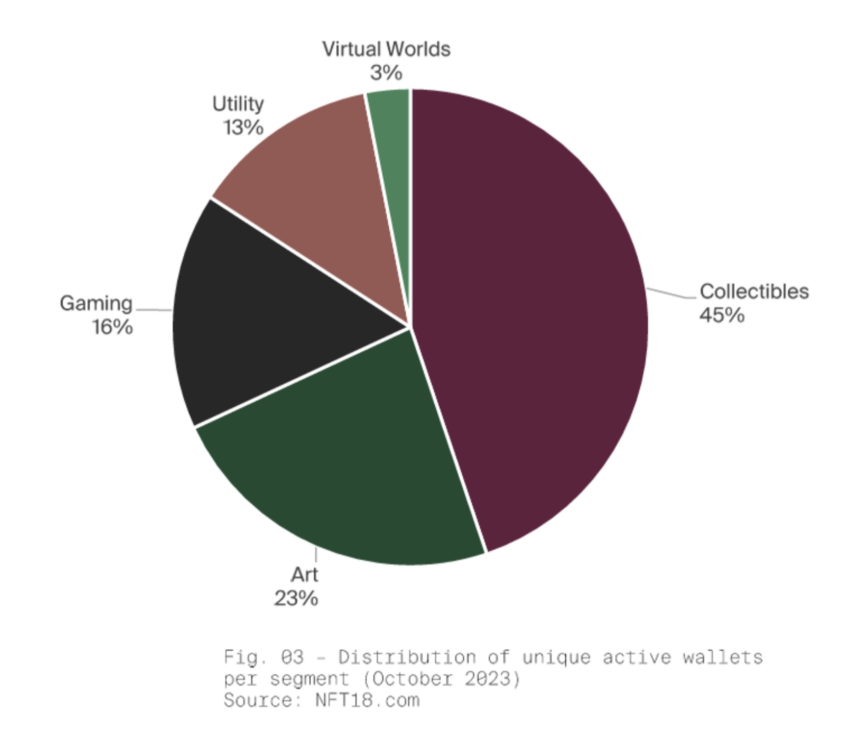While non-fungible token (NFT) marketplaces have been quiet compared to the heady days of 2021, they are certainly not dead. Instead, NFT collectors have shifted focus to holding on to their belongings longer as the concept of community takes hold.
An October report from NFT18 shows that the time between an NFT purchase and resale has almost quadrupled since 2021 to just under 100 days. Somewhat counterintuitively, the active wallets on OpenSea are still quite healthy at 192,500.
The art segment is becoming increasingly popular
Blur, an OpenSea competitor, offers incentives that may have artificially inflated half of its $213 million in volume, making it difficult to measure organic trading activity. OpenSea had the second largest volume in October at $84.8 million. The number of active projects (at least one sale in the past month) increased by 4% to 35% compared to September.
In terms of categories, collectibles such as the Azuki, Doodles and Bored Ape Yacht Club collections still dominate the NFT market in terms of active wallets (45%). Surprisingly, art is the second most active wallet (23,000), while gaming, utilities and virtual world make up the remaining 122,874 transaction addresses.

Art is a growing NFT sector. Source: NFT18
The art traded makes up just 7% of the total volume traded in October, but the segment is growing as companies like 10101.art and others fractionate art for shared ownership. Some owners are less likely to sell their NFTs because they are collectors rather than speculators.
Read more: NFT art: how it differs from traditional art
The future of NFT marketplaces lies in the community
In an interview with BeInCrypto, the head of UNCUT, Carlos Diaz, suggested that NFT marketplaces of the future must consider social features from the start. They should focus more on the collector community and focus less on speculation. UNCUT is a creator-focused NFT platform with social interaction at its core.
“[OpenSea was] bringing in money, you know, buckets full, but there wasn’t really a focus on improving the user experience. Now everyone is focusing on that again. Right now everyone is talking about social graphs, social wallets and social marketplaces because they realize they are no longer riding a hype wave,” Diaz told BeInCrypto.
He added that NFTs are “very powerful identity markers,” testifying to the community a holder wants to belong to. Creators of NFTs can enjoy social validation through compensation from community members. This approach can build strong communities based on shared interests rather than the ability to make a quick buck.
“If you own an asset that connects you to other people, you don’t want to sell it because the moment you sell it, you lose those social connections.”
Read more: 7 ideas for beginners to create digital art

